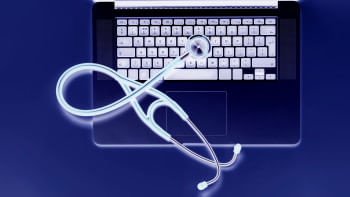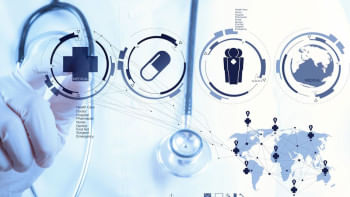Why Bangladesh should invest in health information technology

High healthcare costs, medical malpractice, poor quality of care: the list goes on and on when defining healthcare in Bangladesh. Too much is at stake when a healthcare system is plagued by these issues. And it is the patients who suffer the most. Bangladesh does not lack talent in the medical profession, but it surely falls short in leadership and commitment to improving the healthcare system.
Health information technology (Health IT) can largely cure these problems.
Health IT can be anything from software to the internet, computers, mobile applications, laptops and smartphones that ease communication in taking care of patients. The primary goals of Health IT are to save patient information electronically and facilitate communication between providers. Of course, at an advanced level, it facilitates the exchange of data among all healthcare providers.
Saving patient's data electronically is key to improving care. In Bangladesh, physicians still use pen and paper to write prescriptions. Often, it is not legible. Prescriptions get lost. Patients must carry their healthcare documents with them when visiting a physician. Only a small percentage of providers use computers to save patient's data. They either do not have the resources to maintain digital records, or they are simply not interested in doing so due to the lack of requirements. So, it is mostly on the patient to save their prescription or remember their medication. For elderly people, it is even more cumbersome. Health IT can dramatically improve record-keeping.
The USA implemented a Health Information Technology for Economic and Clinical Health (HITECH) Act in 2009 that requires physicians to maintain records electronically. In 2009, the country was not a long way ahead of where Bangladesh is now in terms of medical data management. To promote information technology in healthcare, the federal government provided financial incentives to providers to meet the costs of this new requirement. The law was followed by massive diffusion of Health IT. It, in fact, revolutionised healthcare. Patients no longer needed to carry and save their prescriptions, lab tests, diagnosis results, etc, as the physicians began to save them on their devices. Prescriptions were sent to pharmacies electronically. Bangladesh can take steps toward electronic health records to accomplish these goals.
One critical aspect of Health IT is improved coordination between providers. Patients need to move from one provider to another for treatment. In the current situation, new providers will often require patients to get a new diagnosis/lab test, even though the patient has already completed that procedure with another provider. This leads to more expenses, in addition to physical and mental hardships; it gets especially harder on low-income families. To avoid this, providers need to be willing to collect data from another provider of the patient before their visit using phone, fax, or even mail. It allows the treating physician to investigate the patient's medical history prior to the visit. The availability of such data before an encounter not only improves care, but also reduces costs in terms of avoiding unnecessary medical procedures.

At a more advanced stage, technology can allow data exchange in the entire healthcare ecosystem, digitally and automatically. Using the internet and software, clinicians can see patient's data saved in the healthcare systems using their demographic information such as name, date of birth, address, etc. This advanced stage is easier said than done, but it is possible. Ninety-six percent of Florida's hospitals are capable of sharing data electronically in real-time using Health IT. There are many laws in the US requiring healthcare providers to share their patient's health information with other providers, as and when appropriate. This provides the patient's medical history to attending clinicians, allowing for better service.
During the height of Covid-19, telehealth (or telemedicine) was used to treat patients across the globe, including in Bangladesh. With the advancement of Health IT, telehealth can be the primary source of healthcare for rural patients who lack transportation and good doctors. Using technology, clinicians from anywhere in the country can see patients, no matter their location. They can even provide free medical advice via face-face-face encounters, closing the massive gap in healthcare between rural and urban populations. Patients can manage their doctors' appointments using mobile apps at their fingertips. Because of the availability of advanced technology, telehealth took a big leap during Covid-19 in the US, and, in fact, the healthcare community sees telehealth as the future.
Healthcare is notoriously complex. By investing in Health IT, we can revolutionise public health. The role of the government comes foremost in transforming legacy healthcare into a modern system. By using laws and regulations, as well as financial incentives, the government can truly take the lead to provide better care for all citizens. It is an ambitious goal, but it is within reach.
ABM Uddin is a programme manager at the Florida Agency for Health Care Administration.

 For all latest news, follow The Daily Star's Google News channel.
For all latest news, follow The Daily Star's Google News channel. 










Comments